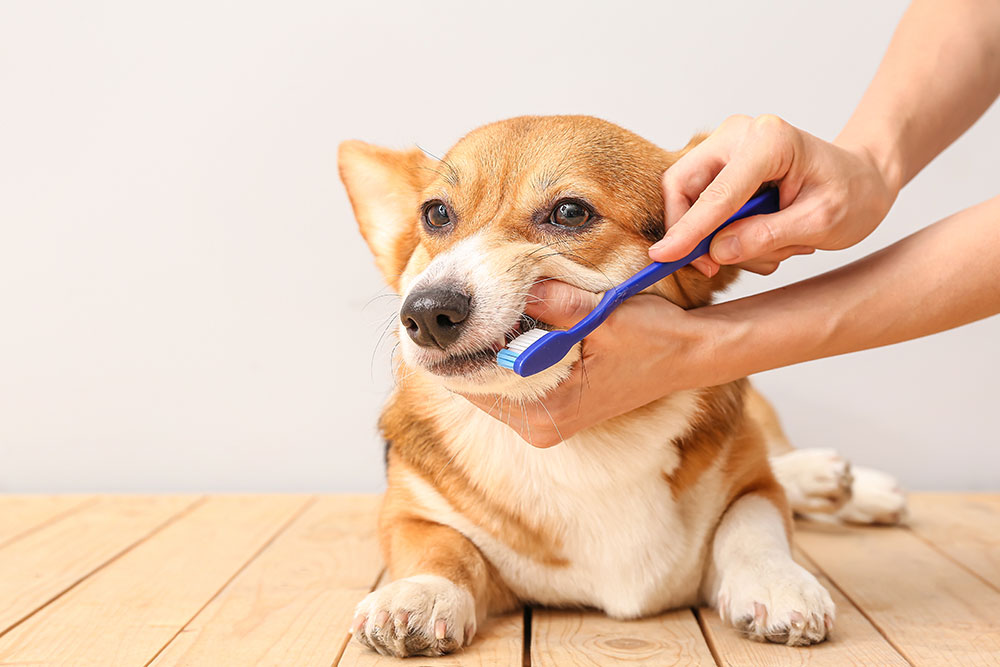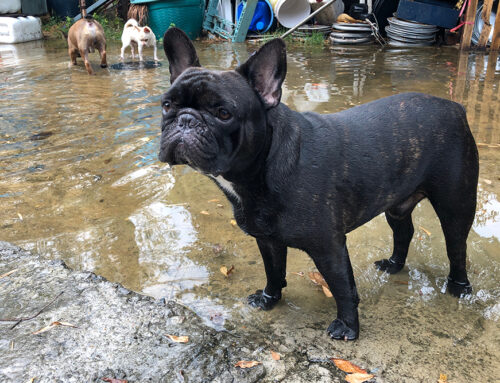Is brushing your pet’s teeth really necessary? The answer is yes—but there are other options, too. Some pets don’t mind, or even enjoy, having their teeth brushed. Others resist with surprising willpower—and they’re fast! As you watch your cat spring for the door or your dog vanish into the yard, you may find yourself wondering, do I really need to do this? Daily brushing, just like for humans, is ideal, but it can be a challenge. Luckily, there are a variety of effective products that can make pet dental care more manageable.
Why Dental Care Matters for Dogs and Cats
Imagine going years without brushing your teeth. For pets, plaque quickly hardens into tartar, leading to painful gum disease, tooth decay, and even bone loss. In both dogs and cats, untreated dental disease can lead to severe infections that go beyond the mouth. Bacteria from periodontal disease can enter the bloodstream, spreading to major organs like the heart, kidneys, and liver. In advanced cases, this bacterial spread may lead to life-threatening infections, significantly impacting your pet’s quality of life and longevity.
Without regular dental care, pets can experience painful abscesses and gum infections that make eating difficult and impact their mood and behavior. Severe dental disease can erode the lower jawbone, making it fragile and susceptible to fractures. Advanced disease in the large premolars can lead to retrobulbar abscesses—painful, deep-rooted infections near the eye. Regular brushing and veterinary check-ups help prevent these issues, sparing pets discomfort and saving pet owners from high treatment costs- read more at The American Veterinary Medical Association.
How to Start Brushing (With a Realistic Timeline)
Introducing brushing gradually is key, especially for pets that are new to dental care. Here’s how to build cooperation for a positive brushing experience:
- Cooperative Care Training: Start by slowly building your pet’s tolerance for handling. Use treats, praise, and gentle touch to make handling a positive experience. The goal is to make brushing feel safe and enjoyable, a technique often used in cooperative care training
- Make Toothpaste a Treat: Let your pet lick a dab of pet-safe toothpaste off your finger to create a positive association with the taste
- Introduce Tools Gradually: Let your pet sniff and explore the toothbrush or washcloth, then gently rub just one or two teeth to start
- Work Slowly Over Time: Start with a few teeth and gradually increase brushing time as your pet becomes more comfortable. Aim for one side of the mouth initially
- Celebrate Progress: Praise, treats, and even a quick play session can reinforce positive behavior after brushing attempts.
Brushing Isn’t the Only Option
If brushing isn’t feasible, there are several alternative methods to help keep your pet’s teeth clean:
- Dental Wipes: Wipes are a convenient way to remove plaque. They can be used by simply rubbing the outer surface of your pet’s teeth.
- Finger Brushes, Washcloths, or Your Finger: If your pet is uncomfortable with a toothbrush, a finger brush or damp washcloth with pet-safe toothpaste can effectively break up biofilm and control plaque.
- Water Additives: Adding a pet-safe dental additive to your pet’s water bowl helps reduce plaque and tartar buildup over time.
- Dental Chews and Toys: Chewing encourages saliva production, which helps control bacteria. Look for VOHC-approved chews and toys, as these products have been tested for effectiveness.
- Dental Diets: Specialized kibble can reduce plaque as pets chew. These diets are formulated with textures that help scrub teeth, providing an easy way to support dental health.
- Regular Cleanings with Your Vet: Even with great home care, regular cleanings by your vet are essential for maintaining your pet’s dental health and catching any issues early.
If brushing is difficult, consider that pain might be a factor, as pets with dental issues may resist due to discomfort. In this case, a thorough dental exam is essential to rule out painful conditions and ensure a positive brushing experience. Consistent efforts, even small ones, can significantly benefit your pet’s dental health and overall well-being!









Leave A Comment